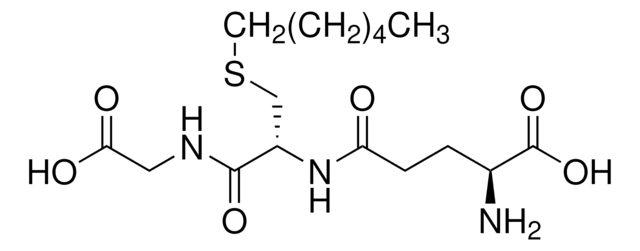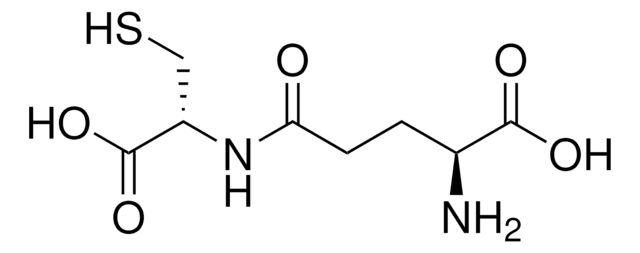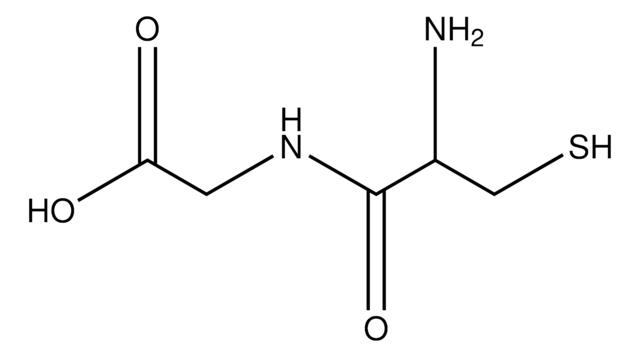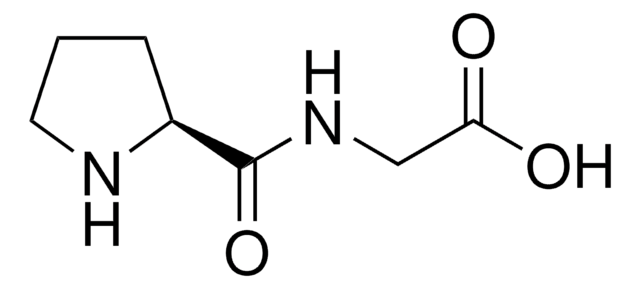M4139
S-Methylglutathione
>98% (TLC), suitable for cell culture
Sinónimos:
L-γ-glutamyl-S-methyl-L-cysteinyl-glycine
About This Item
Productos recomendados
Nombre del producto
S-Methylglutathione,
Ensayo
>98% (TLC)
Formulario
powder
técnicas
cell culture | mammalian: suitable
color
white
temp. de almacenamiento
2-8°C
cadena SMILES
CSCC(NC(=O)CCC(N)C(O)=O)C(=O)NCC(O)=O
InChI
1S/C11H19N3O6S/c1-21-5-7(10(18)13-4-9(16)17)14-8(15)3-2-6(12)11(19)20/h6-7H,2-5,12H2,1H3,(H,13,18)(H,14,15)(H,16,17)(H,19,20)
Clave InChI
QTQDDTSVRVWHMO-UHFFFAOYSA-N
Categorías relacionadas
Acciones bioquímicas o fisiológicas
Sustratos
Código de clase de almacenamiento
11 - Combustible Solids
Clase de riesgo para el agua (WGK)
WGK 3
Punto de inflamabilidad (°F)
Not applicable
Punto de inflamabilidad (°C)
Not applicable
Equipo de protección personal
Eyeshields, Gloves, type N95 (US)
Elija entre una de las versiones más recientes:
¿Ya tiene este producto?
Encuentre la documentación para los productos que ha comprado recientemente en la Biblioteca de documentos.
Los clientes también vieron
Nuestro equipo de científicos tiene experiencia en todas las áreas de investigación: Ciencias de la vida, Ciencia de los materiales, Síntesis química, Cromatografía, Analítica y muchas otras.
Póngase en contacto con el Servicio técnico






